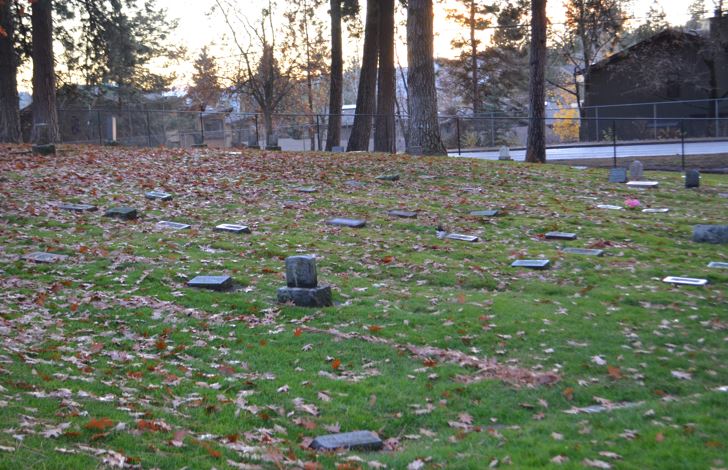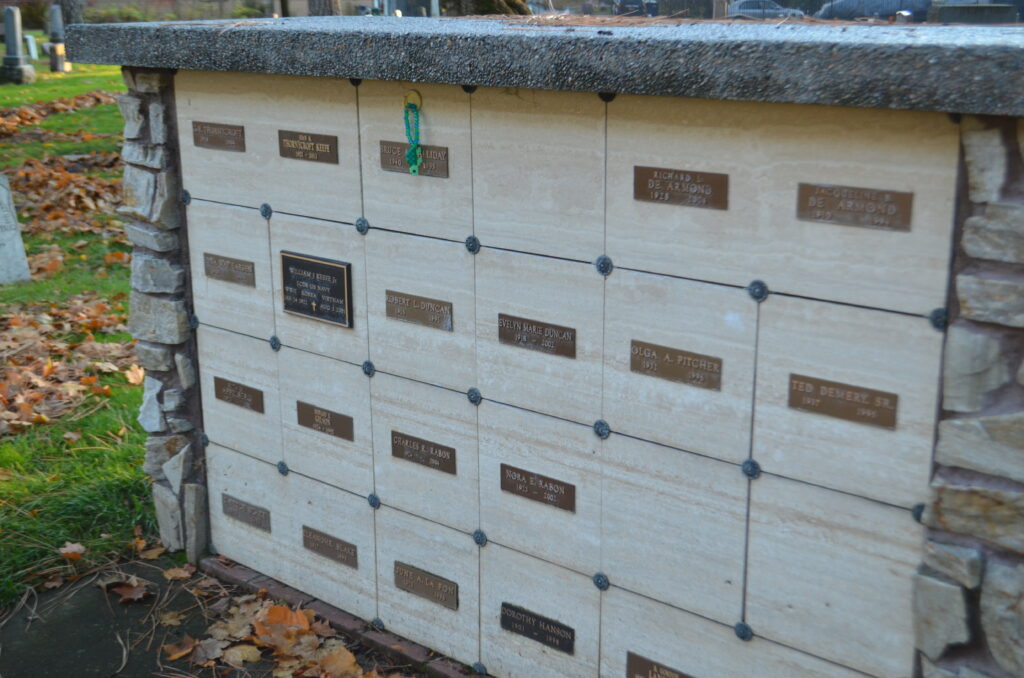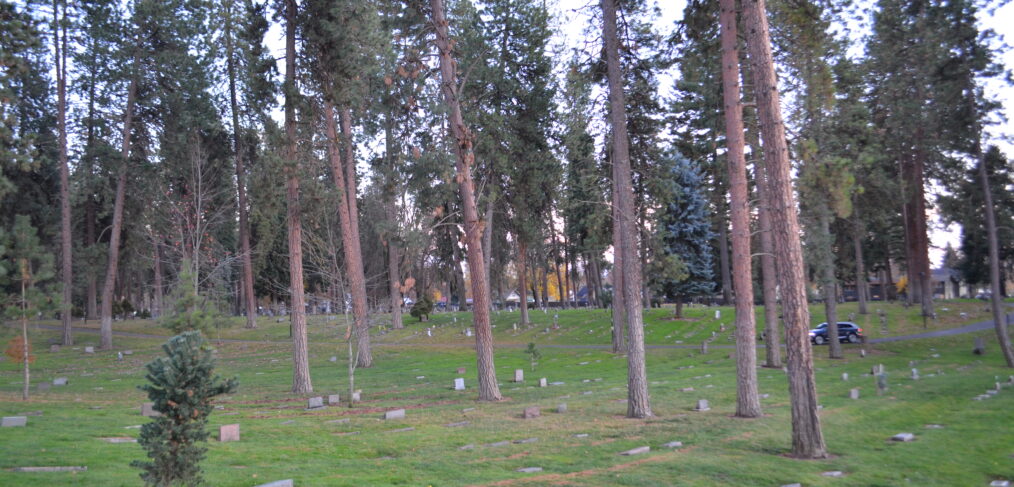Walking around the cemetery in the rain wasn’t the community service I’d imagined. Instead of a cold, crisp day spent with eager eleven-year-olds raking leaves and drinking cider, it was a soaking wet slog that morphed into a layered experience of hearing about life decisions, choices and legacy, for those under the ground and us walking above them.
“Take care not to walk on the gravestones,” intoned the sexton, or cemetery custodian as they are called, his dark eyes focusing on the impatient boys shuffling between the tombstones. “They represent someone’s brother, mother, sister, dad or infant. Respect that and respect them.” He emphasized the point by hunching his broad soldiers, completely oblivious to the drizzle that evolved to a hard rain, his cotton pullover doing nothing to prevent the moisture that seemed to be running from my hood straight down to my boots. “Let’s start.”

“I thought we were going to be raking,” whispered one of the girls in my group. Me too.
For an hour, we went from one corner of the large cemetery to the other as Robert pointed out historical facts: the sections for soldiers in three different wars, the area reserved for the infants of the Spanish influenza which claimed the lives of over seven hundred children.

I watched the man’s eyes squint as he held back tears describing gluing the marble wings back on the angle when it was half-crushed by a tree during a windstorm. “We made her whole and the angel came back,” he said. Those closest joked about the comment, to which he snapped his head their direction. “She came back,” he repeated, the words emerging as a grumble, silencing the students.

“Do you believe in ghosts?” asked Brooks, a tall, gangly boy who’d been put up to the question by a teacher standing near me.
“Nah, I don’t give that much credit.”
He lied of course. Anyone who has worked in a cemetery for over a decade and intends to work another seventeen years until retirement not only believes in ghosts, but wouldn’t deign to use that term.
“You believe in spirits,” I said to him during a moment of privacy as we walked to another station. He glanced at me, one eyebrow cocked, ascertaining my position on the subject. “I saw your eyes tear up during your mention of the angel wings,” I offered, “and maybe no one else noticed when you were talking about the seven hundred infants, but you choked up.” He nodded his head, admitting to it. “You have children of your own?” I asked, already guessing he didn’t.
“Two step-children. None of my own.”
“Well, you have about seven hundred here.”
The gloss of his eyes visible even through the heavy rain, his emotions at the surface and his agreement clear. “This is my second home and they’re part of it.” Seeing that I was of his persuasion, we talked about the notion that the spirits of the dead live around us, choosing when and to whom they make themselves known. We discussed the things he’d seen, the special experiences he wouldn’t typically share, my life as an author giving me the ability to write about truth while cloaking it as fiction. Early in his tour, he’d revealed he was a newspaper journalist before this job, burning out from cynicism before wanting a change. He’d found it; a reason for living among the dead.

During the fifteen-station, hour-long traipse in the rain, he described the process of internment (putting the body in the ground) and exhuming (taking it out) in graphic detail, such as needing to burn your clothes if you’d been involved in an exhumation. He related the thickness of the cement, double-stacking of bodies, corrosion and other bits related with the precision of a forensics examiner but the empathy of a priest. He was both annoyed and pragmatic about the youth-driven need to gain bragging rights by pushing over a seven-hundred pound headstone, unbothered it horrified and offended the living relatives or that it took a special tractor and two men to set it right.
Walking through the middle section, one tombstone caught my eye. It was K27, the call number for a young police officer killed six years by a convicted felon. Echoing the words of a local officer, not a day goes by that I don’t see a dozen cars with the sticker remembering St. Greg Moore who was shot in cold blood. This occurred just one month before we moved to town, and the community was still in shock; CDA is a place of few shootings or even crime; to have a person killed at all rocked the area.

His retelling of a recently-deceased local businessmen, (who was apparently equally loved and despised) was done with a single story which summed up the man’s legacy. As the man was going to “purchase” (raid/takeover was the general consensus) another newspaper, he was late to the meeting. This sexton, who worked for him at the time, found the man bent over the planter boxes in the front of the building.
“I want my new business to reflect the attitude of the company,” his boss told him. The take-away to those of drenched listeners was that the man lived up to his reputation: precise and ruthless, but endowed with focus, passion and pride in all that he did. If he was going to be involved, it was going to be the best of his abilities, and he had no issue getting on his knees, in the dirt, in his suit pants, to start even before he’d written the check.

As we neared the end of the tour, I found another opportunity to stand beside this man, away from the others.
“Did this job find you, or did you find it?” I asked.
“Both.” He hinted at his situation in life and how he’d evolved from a hard-charging, iron-pumping man focused on all that material possessions with a matching body and attitude to the lead caretaker of cemeteries and parks in the area. “I needed something different at a time when they needed me.”
And by they, I knew what he meant. They were all around us.

He told a story of a man who’s wife had passed, and he was placing the marble box with her askes into the final resting place, a man-height, square edifice with ten compartments across and eight tall known as a columbarium.
“She’s going to get cold,” the husband told this cemetery superintendent. “She always gets cold, and I want her to be warm.”
Robert was unfazed. “I’ll find out a blanket,” he said, excusing himself. “When I returned, we wrapped the blanket around the marble box holding her askes, and slid it within the columbarium. I told him she’d be warm now and he finally felt at peace enough to leave.”

The man left, but Robert the cemetery sexton will be there, watching over the memorials, at least for the next seventeen years.
“And then what?” I wondered to myself if the next sexton care as much, see as much and protect those remains placed underneath or above, someday to retell stories about us.

